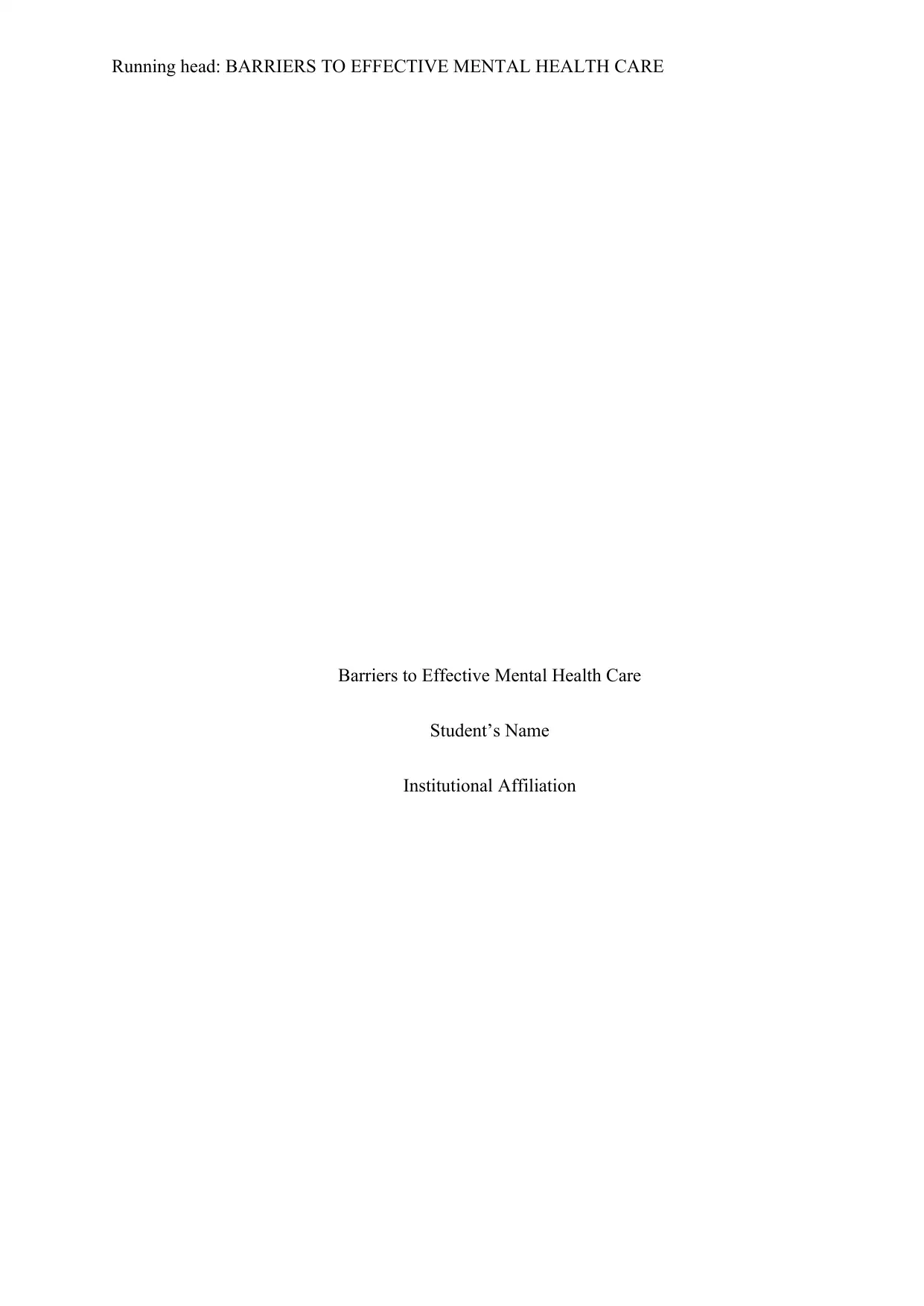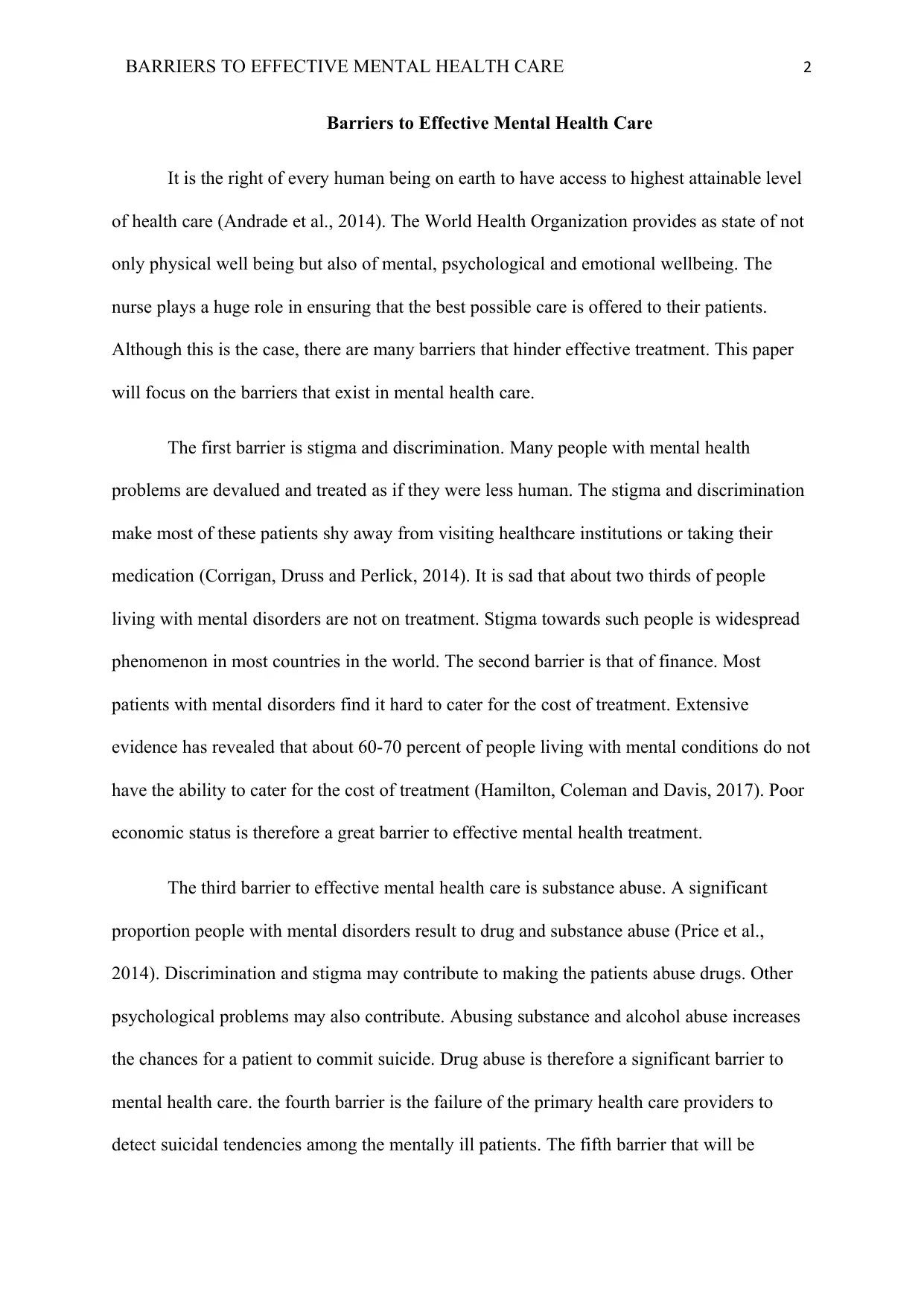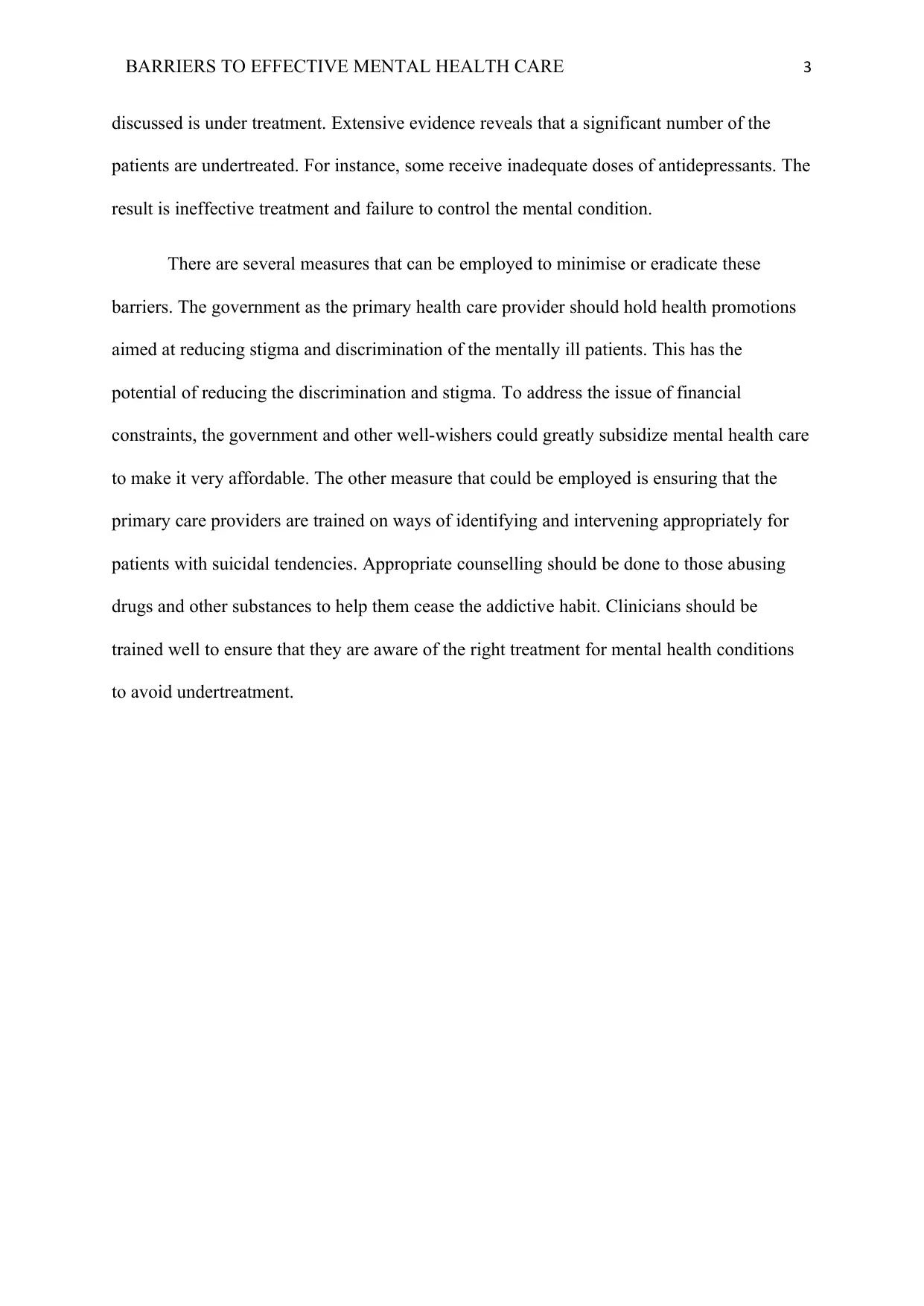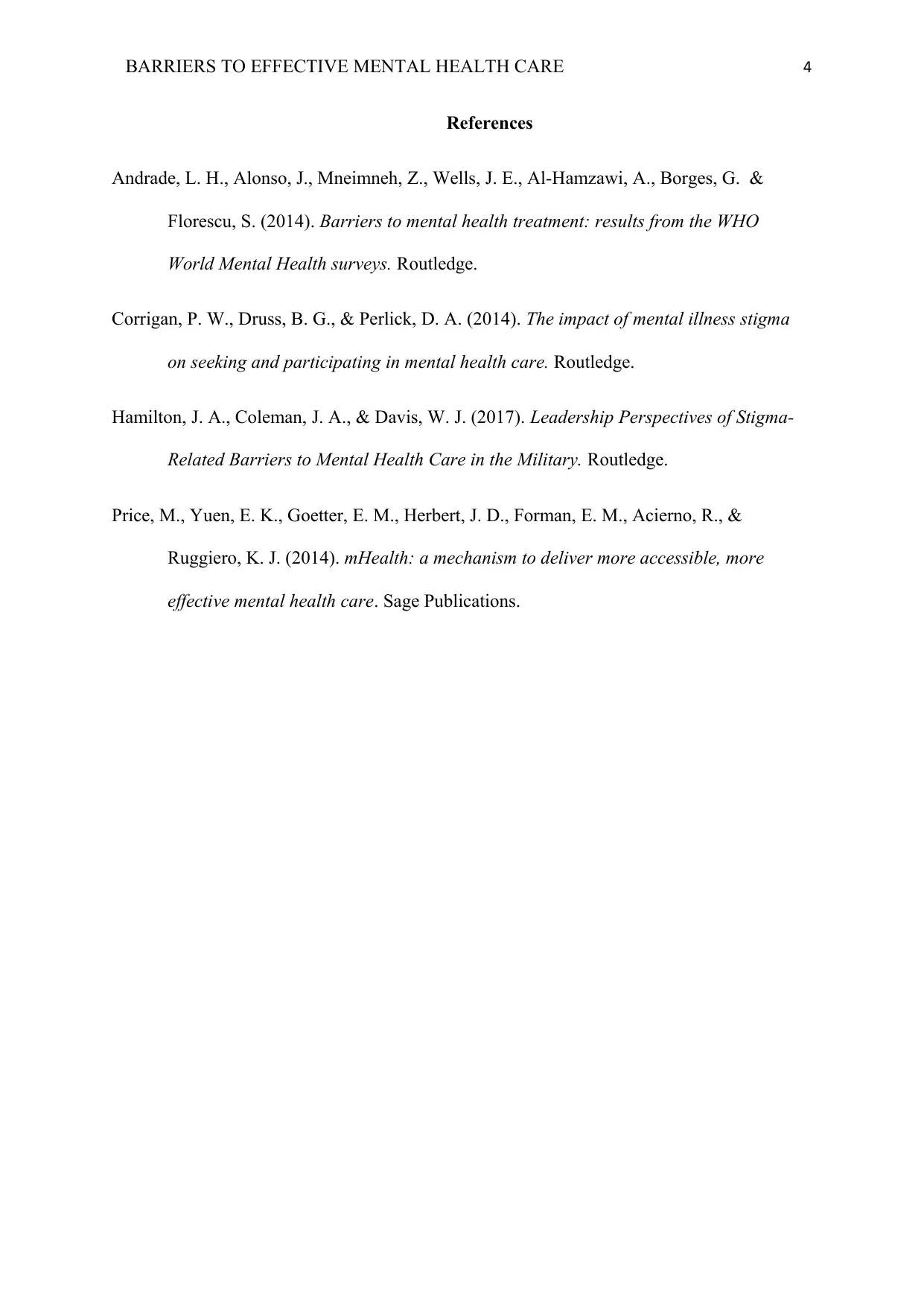Identifying Barriers to Mental Health Care & Translation Science
VerifiedAdded on 2023/05/31
|4
|783
|247
Discussion Board Post
AI Summary
This discussion board post identifies and analyzes five key barriers to effective mental health care: stigma and discrimination, financial constraints, substance abuse, failure to detect suicidal tendencies, and undertreatment. It cites relevant literature to support the selection of these barriers and explores strategies to reduce their impact and increase translation science efforts. The proposed solutions include government-led health promotions to reduce stigma, subsidizing mental health care to improve affordability, training primary care providers to identify and intervene with suicidal patients, providing counseling for substance abuse, and ensuring clinicians are well-trained to deliver appropriate treatment. The post aims to foster a deeper understanding of these challenges and promote actionable strategies for improving mental health care access and quality.
1 out of 4











![[object Object]](/_next/static/media/star-bottom.7253800d.svg)